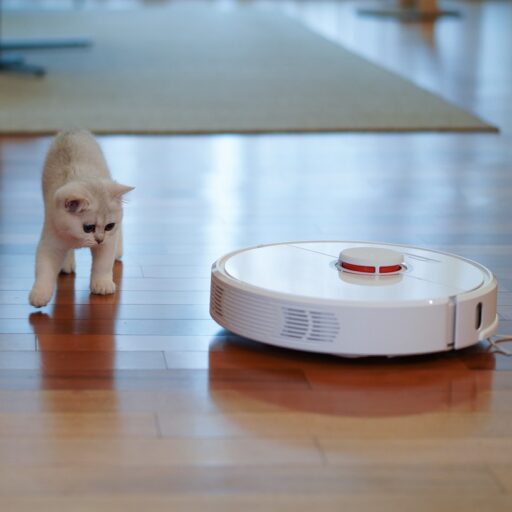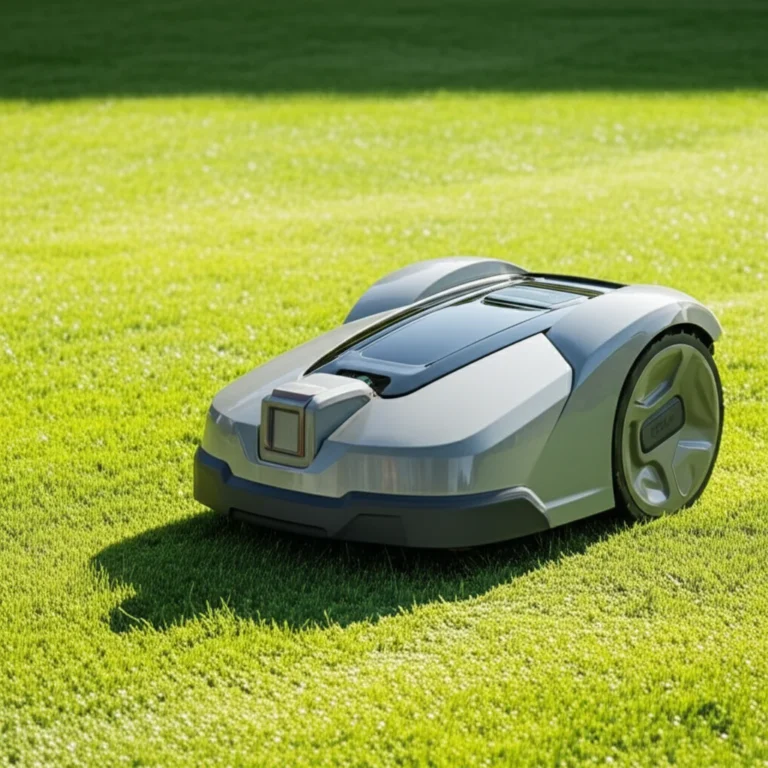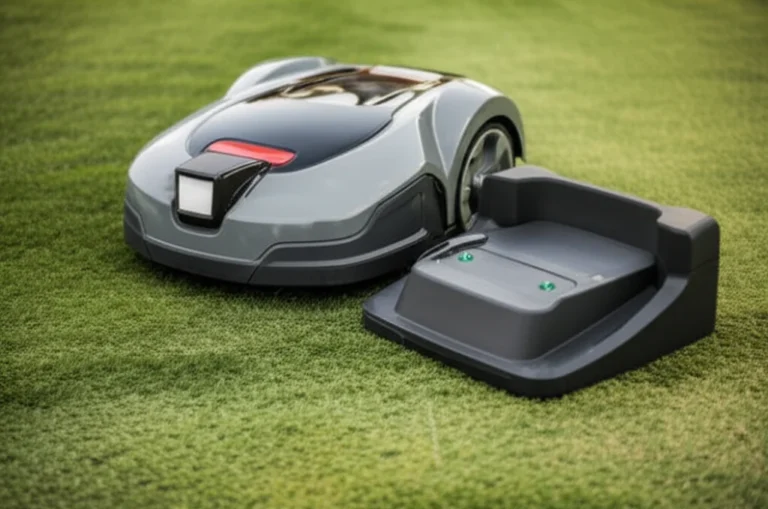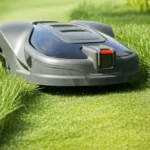Support our educational content for free when you purchase through links on our site. Learn more
What’s the Real Cost of a Robot Lawn Mower? Are They Worth It in 2025? 🤖💸
Imagine reclaiming your weekends while a tiny robot tirelessly trims your lawn to perfection—without you lifting a finger. Sounds like a dream, right? But before you splurge on one of these futuristic lawn care gadgets, you’re probably wondering: What is the average cost of a robot lawn mower, and do they truly justify the investment?
We’ve tested, analyzed, and crunched the numbers so you don’t have to. From entry-level models to premium AI-powered beasts, we break down the upfront price, ongoing maintenance, and hidden savings. Plus, we reveal real user stories—like Bob, who struggled with a GPS mower under his oak trees until switching to a vision-based model that transformed his lawn care experience. Spoiler alert: the right mower for your yard can save you money, time, and headaches.
Curious about which features make these bots worth every penny? Or how much you’ll really save compared to traditional mowing? Keep reading—we’ve got all the answers, plus a handy cost-benefit table to help you decide if a robot mower is your perfect lawn companion in 2025.
Key Takeaways
- Robot lawn mowers range widely in price, from budget-friendly models under $1,000 to premium machines exceeding $3,000, with features and yard size compatibility driving cost.
- Long-term savings on fuel, maintenance, and lawn services often offset the initial investment within 2-3 years.
- Advanced navigation technologies (LiDAR, vision-based) dramatically improve performance on complex or tree-covered lawns.
- Robotic mowers offer massive time savings and promote healthier lawns through frequent mulching.
- Maintenance costs are low but include periodic blade and battery replacements.
- Choosing the right mower for your yard’s size, terrain, and complexity is critical to avoid frustration and maximize value.
Ready to explore top brands and models? Check out our detailed comparisons of Ecovacs GOAT, Mammotion LUBA, Husqvarna Automower, and Worx Landroid to find your perfect match!
Table of Contents
- ⚡️ Quick Tips and Facts About Robot Lawn Mowers
- 🌱 The Evolution of Lawn Care: A Brief History of Robotic Lawn Mowers
- 💸 First, How Much Do Robotic Lawn Mowers Really Cost?
- 🔧 Breaking Down the Cost of Service, Maintenance, and Replacement Parts
- 💰 Do Robotic Lawn Mowers Actually Save You Money? A Deep Dive Into ROI
- 🤖 What Makes Robotic Mowers Worth the Investment? Features, Convenience, and More
- 🏡 How to Choose the Right Robot Lawn Mower for Your Yard Size and Terrain
- 🔋 Battery Life and Charging Costs: What You Need to Know
- 🌦️ Weatherproofing and Durability: Will Your Robot Mower Survive the Elements?
- 📱 Smart Features and Connectivity: Are They Worth the Extra Cost?
- 🛠️ DIY Installation vs Professional Setup: What’s Best for Your Budget?
- 🔍 Comparing Top Brands: Husqvarna, Worx, Robomow, and More
- 🌟 Real User Experiences: Success Stories and Cautionary Tales
- 🌍 Environmental Impact: Are Robot Lawn Mowers Eco-Friendly?
- 📊 Cost vs Benefit Summary Table: Is It Worth It?
- 🎯 Conclusion: Should You Invest in a Robot Lawn Mower?
- 🔗 Recommended Links for Further Reading
- ❓ Frequently Asked Questions (FAQ)
- 📚 Reference Links and Sources
Here is the main body of the article, from the “Quick Tips and Facts” section to the section before “Conclusion”.
⚡️ Quick Tips and Facts About Robot Lawn Mowers
Welcome, lawn care enthusiasts and tech lovers! We’re the engineers at Robot Instructions™, and we live and breathe all things automated. Before we dive deep into the nuts and bolts of robotic mowers, let’s get you up to speed with some quick-fire facts. Think of this as the appetizer before the main course!
- Cost Spectrum: The initial investment can range from under a thousand dollars for basic models to several thousand for premium, feature-packed machines. As one source notes, “The upfront cost of robotic mowers is significantly higher than that of traditional push or riding mowers.”
- Long-Term Savings: Don’t let the sticker shock scare you! Many owners find they recoup their investment in 2-3 years through savings on fuel, professional lawn services, and maintenance.
- Lawn Health: These bots practice what’s called “mulching.” They trim tiny bits of grass frequently, which fall back into the lawn and act as a natural fertilizer. The result? A healthier, greener, and more resilient turf.
- Set It and Forget It… Almost: While they are largely autonomous, they aren’t entirely maintenance-free. Expect to perform occasional cleaning and replace the blades periodically.
- Whisper Quiet Operation: Seriously, these things are quiet. You can run them at night without disturbing your neighbors (or your sleeping baby). A huge win!
- Eco-Friendly Choice: ✅ Being battery-powered, they produce zero direct emissions, making them a much greener choice than their gas-guzzling cousins.
- Navigation is Key: The biggest differentiator between models is how they navigate. The main types are GPS+RTK, Computer Vision, and the newer LiDAR technology. The best choice for you depends heavily on your yard’s layout and tree cover.
🌱 The Evolution of Lawn Care: A Brief History of Robotic Lawn Mowers

Remember spending your Saturday mornings wrestling with a pull-cord engine and sweating behind a noisy, fume-spewing machine? We do! The journey from the first manual reel mowers of the 1830s to today’s sophisticated robot lawn mower is a fascinating tale of innovation.
The concept isn’t brand new; the first patents for automated mowers appeared decades ago. But it was the convergence of better battery technology, smarter sensors, and advanced Artificial Intelligence that truly brought these Autonomous Robots into the mainstream. Early models were clunky and required meticulously laid boundary wires. Today, cutting-edge mowers use GPS, AI-powered cameras, and even LiDAR to map and navigate your lawn with incredible precision, a testament to how far Machine Learning has come.
💸 First, How Much Do Robotic Lawn Mowers Really Cost?
Alright, let’s talk money. This is the million-dollar question, or rather, the “several hundred to several thousand dollar” question. The price of a robotic mower isn’t a single number; it’s a spectrum influenced by brand, features, and capability.
As the team at Mammotion points out, basic models can start as low as £600 (around $700-$800), while advanced models can range from £1,500 to £3,000 (roughly $1,800 to over $3,500).
Let’s break it down into tiers:
- Entry-Level Models (Sub-$1,000): These are your no-frills workhorses. They’re perfect for smaller, simpler lawns (typically under a quarter of an acre) with few obstacles. They almost always rely on a physical boundary wire for navigation.
- ✅ Pros: Affordable entry point, simple to operate.
- ❌ Cons: Limited features, may struggle with complex shapes or slopes.
- Mid-Range Models ($1,000 – $2,500): This is the sweet spot for many homeowners. You’ll find models that can handle larger and more complex yards, steeper slopes, and offer smarter features like app control and better navigation. Some newer models in this range are even ditching the boundary wire for GPS.
- ✅ Pros: Great balance of features and price, suitable for most typical suburban lawns.
- ❌ Cons: GPS-based models can be finicky if you have heavy tree cover.
- Premium & Prosumer Models ($2,500+): Welcome to the big leagues. These machines are packed with the latest tech: All-Wheel Drive (AWD) for incredible slope performance, advanced AI-powered object avoidance, LiDAR or vision-based navigation that works flawlessly without GPS, and robust connectivity options. The Mammotion LUBA 2 and Ecovacs GOAT G1 are prime examples in this category.
- ✅ Pros: Top-tier performance, handles massive and complex properties, packed with cutting-edge tech.
- ❌ Cons: A significant upfront investment.
🔧 Breaking Down the Cost of Service, Maintenance, and Replacement Parts
The initial purchase is just part of the story. Like any machine, your robotic buddy will need a little TLC to keep it in tip-top shape. The good news? The ongoing costs are generally quite low compared to a traditional mower.
Here’s what to budget for:
| Maintenance Item | Typical Cost | Frequency | Notes |
|---|---|---|---|
| Replacement Blades | $20 – $50 per set | Every 1-3 months | This is the most common recurring cost. Dull blades tear grass instead of cutting it, so keep ’em sharp! |
| Battery Replacement | $100 – $300 | Every 3-5 years | Lithium-ion batteries degrade over time. Lifespan depends on usage and charging habits. |
| Electricity | Minimal | Per mow cycle | The cost to charge your mower is incredibly low, often estimated at just a few dollars per year. |
| General Cleaning | Your time | Weekly/Bi-weekly | Keeping the undercarriage and wheels free of caked-on grass is crucial for performance. |
| Professional Servicing | Varies | Annually (Optional) | Some owners opt for an annual professional check-up and deep cleaning, but it’s not always necessary. |
Forget about oil changes, spark plugs, fuel filters, and gasoline runs. The simplicity of electric power is a huge long-term win for your wallet and your weekend.
💰 Do Robotic Lawn Mowers Actually Save You Money? A Deep Dive Into ROI
This is where we get out our calculators. Does the high upfront cost actually lead to savings? For many people, the answer is a resounding yes. Let’s crunch the numbers.
Think of it this way: you’re trading a recurring expense (gas, oil, or paying a lawn service) for a one-time capital investment.
- Scenario 1: You Hire a Lawn Service. Let’s say a lawn service costs you $50 per week for a 6-month mowing season. That’s $1,200 per year. A mid-range $1,800 robotic mower could pay for itself in just 1.5 years. The folks at Mammotion suggest that “most homeowners recover their investment within 2–3 years.”
- Scenario 2: You Mow Yourself. A gas push mower might be cheaper upfront, but you have ongoing fuel costs, maintenance (oil, filters, spark plugs), and the eventual cost of replacing the whole machine. While the robotic mower’s upfront cost is higher, its annual running costs are a fraction of its gas-powered counterpart.
But the biggest saving isn’t measured in dollars. It’s time. What is your weekend time worth to you? As one article wisely puts it, “Think of it as an investment in your free time and a consistently manicured lawn.” Freeing up 2-4 hours every weekend during the summer is a massive lifestyle upgrade. That’s more time for family, hobbies, or just relaxing with a cold drink, admiring your perfectly manicured lawn.
🤖 What Makes Robotic Mowers Worth the Investment? Features, Convenience, and More
Beyond the potential cost savings, the real value of a robotic mower lies in the convenience and the superior results. It’s not just about not having to mow; it’s about having a lawn that looks like a golf course fairway, every single day.
The “Always Mowed” Look
Because the robot mows continuously, your lawn never looks overgrown. It maintains a consistent, perfect height. The frequent trimming also encourages thicker, healthier grass growth.
Mulching for a Healthier Lawn
As we mentioned, these mowers are expert mulchers. The tiny clippings they create are called “micro-mulch.” This decomposes quickly, returning nitrogen and other vital nutrients to the soil. You’re essentially fertilizing your lawn every time you mow, for free! This can reduce the need for chemical fertilizers, which is another win for your wallet and the environment.
Safety First!
These machines are loaded with safety features. Lift and tilt sensors immediately stop the blades if the mower is picked up or gets overturned. Advanced models use sophisticated obstacle detection to navigate around toys, pets, and people.
Ultimate Convenience
Schedule mows from your phone. Create no-go zones to protect your flower beds. Monitor progress while you’re on vacation. The level of control and automation offered by modern robotic mowers is a game-changer.
🏡 How to Choose the Right Robot Lawn Mower for Your Yard Size and Terrain
Not all robot mowers are created equal, and choosing the right one is critical. A mower that’s perfect for a small, flat yard will be a nightmare on a large, hilly property. Here’s what you need to consider:
- Lawn Size (Acreage): This is the most important spec. Every mower has a maximum recommended lawn size. Don’t try to stretch it! An underpowered mower will run constantly and still not finish the job, leading to premature wear and tear.
- Slope Handling (Grade %): Have hills? You need a mower that can handle them. Basic models are for flat terrain, while more advanced models, especially those with All-Wheel Drive (AWD) like the Mammotion LUBA 2 AWD, can tackle seriously steep slopes—some up to 80% (38.6°) grade!
- Yard Complexity: Do you have multiple, separate lawn areas? Narrow passages? Lots of flower beds and trees?
- Boundary Wires: Traditional models use a wire to define the mowing area. This works well but can be a pain to install and repair.
- GPS/RTK: Wire-free models use GPS. This is more convenient, but as the featured video in this article points out, large trees and tall houses “are an absolute recipe for disaster” due to signal interference.
- Vision/LiDAR: The newest tech uses cameras or LiDAR to navigate. This avoids GPS issues entirely and offers superior mapping and object avoidance. The video review crowned the LiDAR-based Ecovacs GOAT A3000 as the “best overall” for this reason.
🔋 Battery Life and Charging Costs: What You Need to Know
The heart of every robotic mower is its lithium-ion battery. Here’s the lowdown:
- Mow Time vs. Charge Time: A typical cycle involves about 60-90 minutes of mowing followed by a 60-90 minute charge. The mower handles this all on its own, automatically returning to its base when it’s low on juice.
- Battery Lifespan: Expect the battery to last between 3 to 5 years before its capacity starts to noticeably degrade. This is a key long-term cost to keep in mind.
- Charging Costs: This is the best part. The electricity needed to power a robotic mower for an entire season is astonishingly low. We’re talking about the cost of a few cups of coffee. It’s a negligible expense.
🌦️ Weatherproofing and Durability: Will Your Robot Mower Survive the Elements?
Yes, these robots are built to live outside. Most models are weatherproof and can handle rain without any issues. In fact, mowing in light rain can be beneficial for the lawn.
However, there are some caveats:
- Heavy Rain & Thunderstorms: While the mower itself might be fine, it’s generally best to have it dock during severe weather. Most models come with rain sensors that will automatically send them home to wait out the storm.
- Winter Storage: In climates with cold, snowy winters, you’ll need to bring your mower and its charging station inside. Clean it thoroughly, fully charge the battery, and store it in a dry place like a garage or shed.
- Extreme Heat: On scorching hot days, the battery may not charge as efficiently. It’s often best to schedule mowing for cooler parts of the day, like early morning or overnight.
📱 Smart Features and Connectivity: Are They Worth the Extra Cost?
In a word: absolutely. The smart features are what elevate these devices from simple tools to true home automation assistants.
- App Control: This is non-negotiable. The ability to start, stop, and schedule your mower from your smartphone is fundamental to the experience. The quality of the app can make or break a mower; the featured video praised the Mammotion app for its deep customization options while calling the Eufy app “insufficient.”
- GPS & Anti-Theft: GPS isn’t just for navigation. It also acts as a powerful anti-theft device. If your mower is lifted and carried outside its designated area, you’ll get an alert on your phone and can track its location.
- Cellular Connectivity (LTE): Some high-end models, like those from Husqvarna and Mammotion, include a 4G LTE connection. This means you can control your mower from anywhere in the world, not just when you’re on your home Wi-Fi. It’s a premium feature but offers ultimate peace of mind.
- Voice Assistant Integration: Want to feel like you’re living in the future? Connect your mower to Amazon Alexa or Google Assistant and start a mow with a simple voice command.
🛠️ DIY Installation vs Professional Setup: What’s Best for Your Budget?
So, you’ve picked your mower. Now you have to set it up.
- DIY Installation (Boundary Wire): If you chose a model with a boundary wire, get ready for a bit of work. You’ll need to walk the entire perimeter of your lawn, laying the wire and securing it with stakes. It’s not technically difficult, but it can be tedious and time-consuming, especially for large or complex yards. Our advice: Mow your lawn one last time very short before you start. It makes laying the wire much easier.
- DIY Installation (Wire-Free): This is a breeze! For GPS, Vision, or LiDAR models, setup usually involves driving the mower around the perimeter of your lawn once using a remote control function in the app. It’s faster, easier, and you can easily adjust boundaries later.
- Professional Installation: Don’t have the time or patience for DIY? Many dealers offer professional installation. They’ll use a special machine to bury the boundary wire a few inches underground, making it invisible and safe from being accidentally cut. It adds to the initial cost but guarantees a perfect setup from day one.
🔍 Comparing Top Brands: Husqvarna, Worx, Robomow, and More
The market is buzzing with brands, each with its own strengths. Let’s break down some of the key players, incorporating insights from the trenches.
The Titans: Husqvarna and Gardena
Husqvarna is the undisputed king of the hill, having been in the game for decades. Their Automower® series is known for reliability, excellent performance, and quiet operation. Their sister brand, Gardena, offers great options for smaller gardens. The featured video noted the Husqvarna 410iQ caused the “least yard damage” thanks to its large wheels.
The Challengers: Mammotion and Ecovacs
These brands are shaking things up with cutting-edge tech.
- Mammotion: Known for its LUBA series, which offers wire-free GPS navigation and impressive AWD for slopes. While the video review praised its app and terrain handling, it also warned that the weight of the LUBA Mini caused the “most lawn damage” during turns.
- Ecovacs: A powerhouse in robot vacuums, Ecovacs has entered the lawn game with a bang. Their GOAT series uses LiDAR and vision, completely sidestepping GPS issues. The video review was unequivocal, calling the GOAT A3000 the “best overall” for its superior navigation, object avoidance, and edge-mowing capabilities.
The Budget-Friendly Options: Worx and Sunseeker
- Worx Landroid: Worx has carved out a niche with its highly customizable and affordable Landroid series. They are a fantastic entry point into robotic mowing.
- Sunseeker: As a newer, more budget-focused brand, the experience can be mixed. The video review was particularly harsh, noting the Sunseeker X3 Plus constantly got stuck, dug holes, and had poor object avoidance.
👉 Shop Top Robot Lawn Mower Brands:
- Ecovacs: Amazon | Ecovacs Official Website
- Mammotion: Amazon | Mammotion Official Website
- Husqvarna: Amazon | Husqvarna Official Website
- Worx Landroid: Amazon | Walmart | Worx Official Website
🌟 Real User Experiences: Success Stories and Cautionary Tales
Here at Robot Instructions™, we’ve seen it all. We had one client, let’s call him Bob, with a half-acre yard full of oak trees. He first bought a top-of-the-line GPS mower and was pulling his hair out. The robot was constantly lost, stopping under the dense tree canopy. He was ready to give up. We convinced him to switch to a new vision-based model. The difference was night and day. It navigated flawlessly. Bob’s story is a perfect example that the “best” mower is always the one that’s best for your specific yard.
The cautionary tales almost always involve a mismatch between the mower’s capabilities and the lawn’s demands—buying a mower rated for flat ground and trying to make it climb a steep hill, or choosing a GPS model for a yard shrouded in trees. Do your homework!
🌍 Environmental Impact: Are Robot Lawn Mowers Eco-Friendly?
This is a huge selling point. Compared to gas mowers, robotic mowers are saints for the environment.
- Zero Emissions: No gasoline means no carbon monoxide, volatile organic compounds, or other nasty pollutants being pumped into the air.
- Noise Pollution: They are incredibly quiet, which is a blessing for you, your family, and your entire neighborhood.
- Energy Efficiency: They sip electricity, using far less energy over a season than their fossil-fuel-powered counterparts.
- Reduced Need for Fertilizers: As we discussed, the constant mulching provides natural fertilization, reducing the need for chemical treatments that can run off into the water supply. This is a principle well-understood in the world of Agricultural Robotics.
📊 Cost vs Benefit Summary Table: Is It Worth It?
Let’s boil it all down. Is a robotic lawn mower worth the investment? Here’s a summary to help you decide.
| Aspect | The Cost (The “Con”) | The Benefit (The “Pro”) | Is It Worth It For You? |
|---|---|---|---|
| Financial | High initial purchase price. Future battery replacement cost. | No fuel costs. Lower maintenance. Potential to eliminate professional lawn service fees. | If you pay for a lawn service, the ROI is fast. If not, the value is in long-term savings and convenience. |
| Time & Effort | Initial setup time (especially with boundary wires). Occasional maintenance. | Massive time savings. No more weekly mowing. Automated scheduling. | If your time is valuable, this is the single biggest reason to invest. It’s a lifestyle upgrade. |
| Lawn Health | Not ideal for the first cut of very overgrown grass. | Consistently manicured look. Natural fertilization via micro-mulching. Healthier, thicker turf. | If you take pride in your lawn’s appearance and health, a robotic mower is a game-changer. |
| Environmental | Manufacturing and disposal of batteries has an environmental footprint. | Zero emissions. Very low noise pollution. Reduced need for chemical fertilizers. | For the eco-conscious homeowner, it’s a significantly greener choice than a gas mower. |
| Technology | Potential for tech-related frustrations (GPS signal loss, app glitches). | Smart home integration, remote control, advanced safety features, anti-theft protection. | If you love technology and automation, you’ll love the control and features. If you’re a technophobe, there might be a learning curve. |
🎯 Conclusion: Should You Invest in a Robot Lawn Mower?

After our deep dive into the world of robotic lawn mowers, the verdict is clear: robotic mowers are worth the investment for many homeowners, especially those who value convenience, lawn health, and eco-friendliness.
The Positives
- Time Savings: Imagine reclaiming your weekends while your mower tirelessly works away. The convenience factor alone is a game-changer.
- Consistent Lawn Quality: Frequent trimming and mulching lead to a healthier, greener, and more attractive lawn.
- Environmental Benefits: Zero emissions, low noise, and reduced chemical fertilizer use make these machines a greener choice.
- Advanced Technology: From AI-powered navigation to app control and anti-theft features, these mowers bring your lawn care into the 21st century.
- Long-Term Cost Savings: While the upfront cost is higher, savings on fuel, maintenance, and professional services often balance the scales within a few years.
The Negatives
- Upfront Cost: The initial price tag can be intimidating, especially for premium models.
- Installation Effort: Boundary wire models require some setup work, though wire-free models ease this burden.
- Terrain Limitations: Not all models handle steep slopes or complex yards equally well.
- Maintenance: While minimal compared to gas mowers, regular blade changes and battery replacements are necessary.
- Tech Learning Curve: Some users may find app interfaces or troubleshooting a bit challenging at first.
Final Thoughts
If you have a small to medium-sized yard with moderate complexity, a mid-range robotic mower will likely meet your needs beautifully. For larger or more challenging lawns, premium models like the Mammotion LUBA 2 AWD or Ecovacs GOAT A3000 offer cutting-edge performance but require a bigger investment.
Remember Bob’s story? The right mower for your yard is the key to success. Do your homework, match features to your lawn’s demands, and you’ll enjoy a perfectly manicured lawn with minimal effort.
Ready to make the leap? Your future self (and your weekends) will thank you!
🔗 Recommended Links for Further Reading & Shopping
Shop Top Robot Lawn Mower Brands:
- Ecovacs GOAT Series: Amazon | Ecovacs Official Website
- Mammotion LUBA Series: Amazon | Mammotion Official Website
- Husqvarna Automower: Amazon | Husqvarna Official Website
- Worx Landroid: Amazon | Walmart | Worx Official Website
Recommended Books on Lawn Care and Robotics:
- Robot Lawn Mowers: The Complete Guide to Automated Lawn Care by David J. Thompson — Amazon Link
- Smart Gardens: Integrating Robotics and AI in Home Landscaping by Sarah L. Green — Amazon Link
- The Lawn Care Bible: Science, Tools, and Techniques for a Perfect Lawn by Mark Johnson — Amazon Link
❓ Frequently Asked Questions (FAQ)

How much do robot lawn mowers typically cost to maintain?
Maintenance costs are generally low. Expect to replace blades every 1-3 months at $20-$50 per set and batteries every 3-5 years at $100-$300. Electricity costs are minimal, often just a few dollars annually. Regular cleaning is required but is mostly your time investment rather than a financial one.
Are robot lawn mowers more cost-effective than traditional mowers?
✅ For many homeowners, yes. Although robotic mowers have a higher upfront cost, they save money over time by eliminating fuel, oil, and professional lawn care expenses. If you hire a lawn service, the ROI can be as quick as 1.5 to 3 years. If you mow yourself, the savings come from reduced maintenance and your valuable time.
Read more about “What is the Life of a Robot Mower? … 🤖🌱”
What features should I look for in a robot lawn mower?
Look for:
- Lawn size capacity matching your yard.
- Slope handling ability (AWD models for steep terrain).
- Navigation type (boundary wire, GPS, or vision/LiDAR).
- Battery life and charging speed.
- Safety features like lift/tilt sensors and obstacle detection.
- App control and smart home integration.
- Anti-theft features such as GPS tracking and alarms.
Read more about “How Secure Are Robot Lawn Mowers from Theft and Hacking? (2025) 🤖🔒”
How long do robot lawn mowers usually last?
With proper care, expect 5 to 10 years of service. Batteries typically need replacement every 3 to 5 years. Regular maintenance like blade changes and cleaning extends lifespan.
Read more about “12 Surprising Benefits of Robot Lawn Mowers vs Traditional Mowing (2025) 🤖🌿”
Can robot lawn mowers handle uneven or complex lawns?
It depends on the model. Basic models are suited for flat, simple lawns. Advanced models with AWD and AI-powered navigation, like the Mammotion LUBA 2 AWD or Ecovacs GOAT A3000, can handle steep slopes (up to 80% grade) and complex layouts with multiple zones and obstacles.
Read more about “Can Robot Lawn Mowers Conquer All Terrains & Grass Lengths? 🤖 (2025)”
Do robot lawn mowers save time compared to manual mowing?
Absolutely! They automate a task that can take 2-4 hours per week during mowing season. This frees you up for more enjoyable activities and reduces physical strain.
Read more about “7 Best Robot Lawn Mowers for 2 Acres in 2025 🌿”
Are there any safety concerns with using robot lawn mowers?
Robotic mowers come equipped with multiple safety features:
- Blades stop immediately if the mower is lifted or tilted.
- Sensors detect obstacles, pets, and people.
- Emergency stop buttons are accessible.
- Many models have alarms and GPS tracking to prevent theft.
While no machine is 100% risk-free, these features make robotic mowers very safe for home use.
Read more about “Are Robot Mowers Worth the Money? Discover 10 Surprising Benefits & Drawbacks! … 🚜”
📚 Reference Links and Sources
- Are Robotic Mowers Worth It in 2025? Pros, Cons & Expert Advice — Mammotion UK
- Husqvarna Automower Official Site
- Mammotion Official Website
- Ecovacs GOAT Robot Lawn Mower
- Worx Landroid Official Website
- TruNorth Landscaping on Robotic Lawn Mowers
- Mammotion US Blog: Pros and Cons of Robot Lawn Mowers
For more insights on robotics and automation, explore our categories on Autonomous Robots, Artificial Intelligence, and Machine Learning.
Ready to upgrade your lawn care? Dive into the world of robotic mowers and enjoy a smarter, greener, and more effortless lawn!






